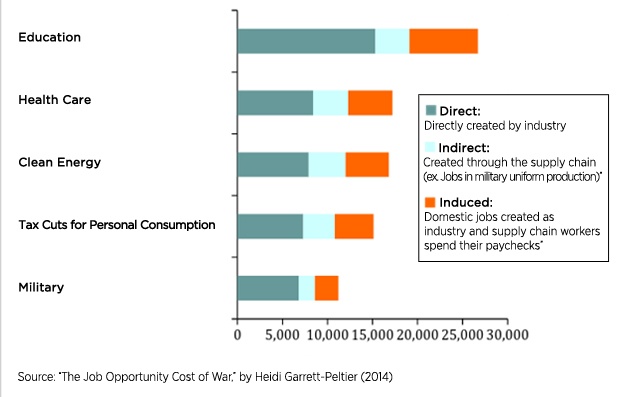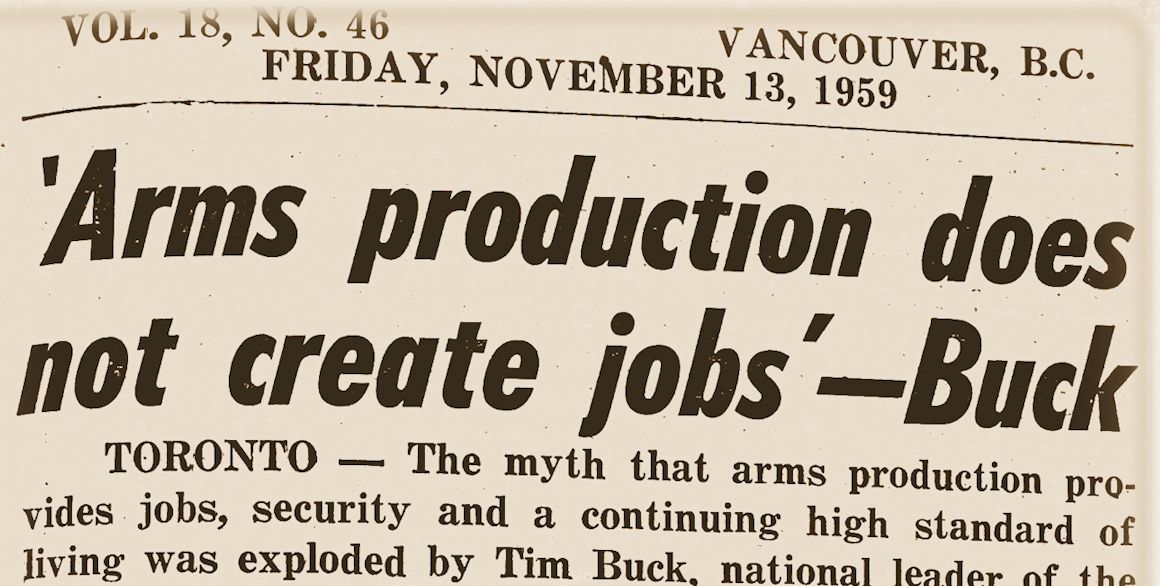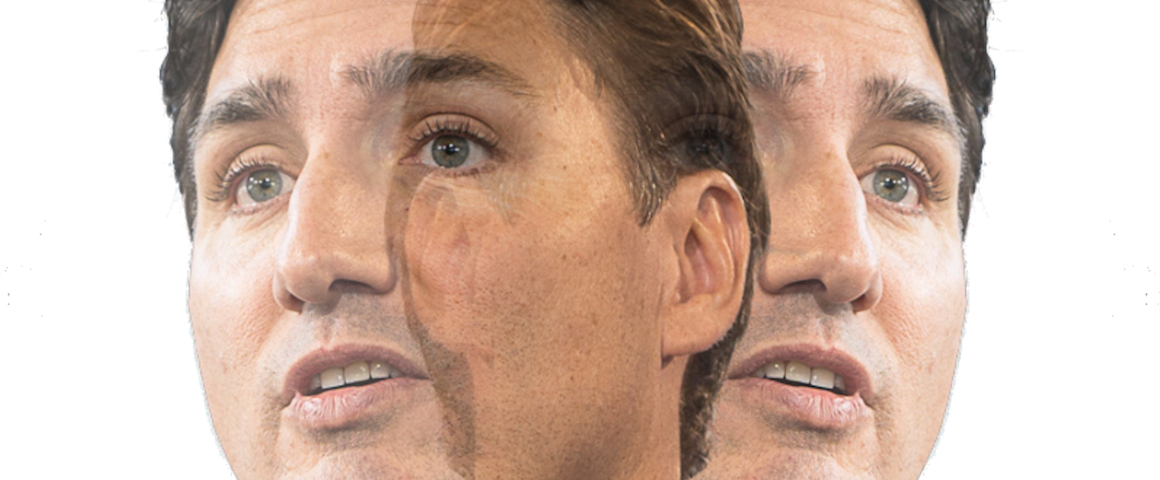Sixty years ago, Communist leader Tim Buck thundered against the myth that military spending creates jobs and prosperity. As Pacific Tribune reported, Buck “quoted figures to show that it was the profit motive and not concern about unemployment that was driving big business spokesmen [sic] to maintain international tensions and mislead the people into supporting their cold war policies.”
Now, as then, this message rings true. According to analysis from the Costs of War Project at Brown University’s Watson Institute for International and Public Affairs, every $1 billion invested in military industry creates approximately 11,200 jobs including direct employment, indirect employment and spinoff jobs. This compares with 26,700 in education, 16,800 in clean energy, and 17,200 in health care. These figures are based on the US economy but will be congruent with experience in Canada.

Figures from the Department of National Defence show that the Canadian government has dedicated nearly $165 billion to military investment by 2037. This money is outside of the formal defence budget. Using the Costs of War Project template this money could maintain up to 1.9 million jobs over 20 years, or about 95,000 in any given year. On the other hand, it could provide as much as 4.4 million jobs – over 220,000 in any year – if it were invested in socially-necessary sectors and industries.

When the labour and progressive movements pressure the minority Liberal government for programs like job creation, expanded health and education, free child-care, and climate justice, they can point very clearly to where the needed money is hidden.
As the Women’s International League for Peace and Freedom said in 1979, ““It will be a great day when our schools get all the money they need, and the air force has to hold a bake sale to buy a bomber.”




